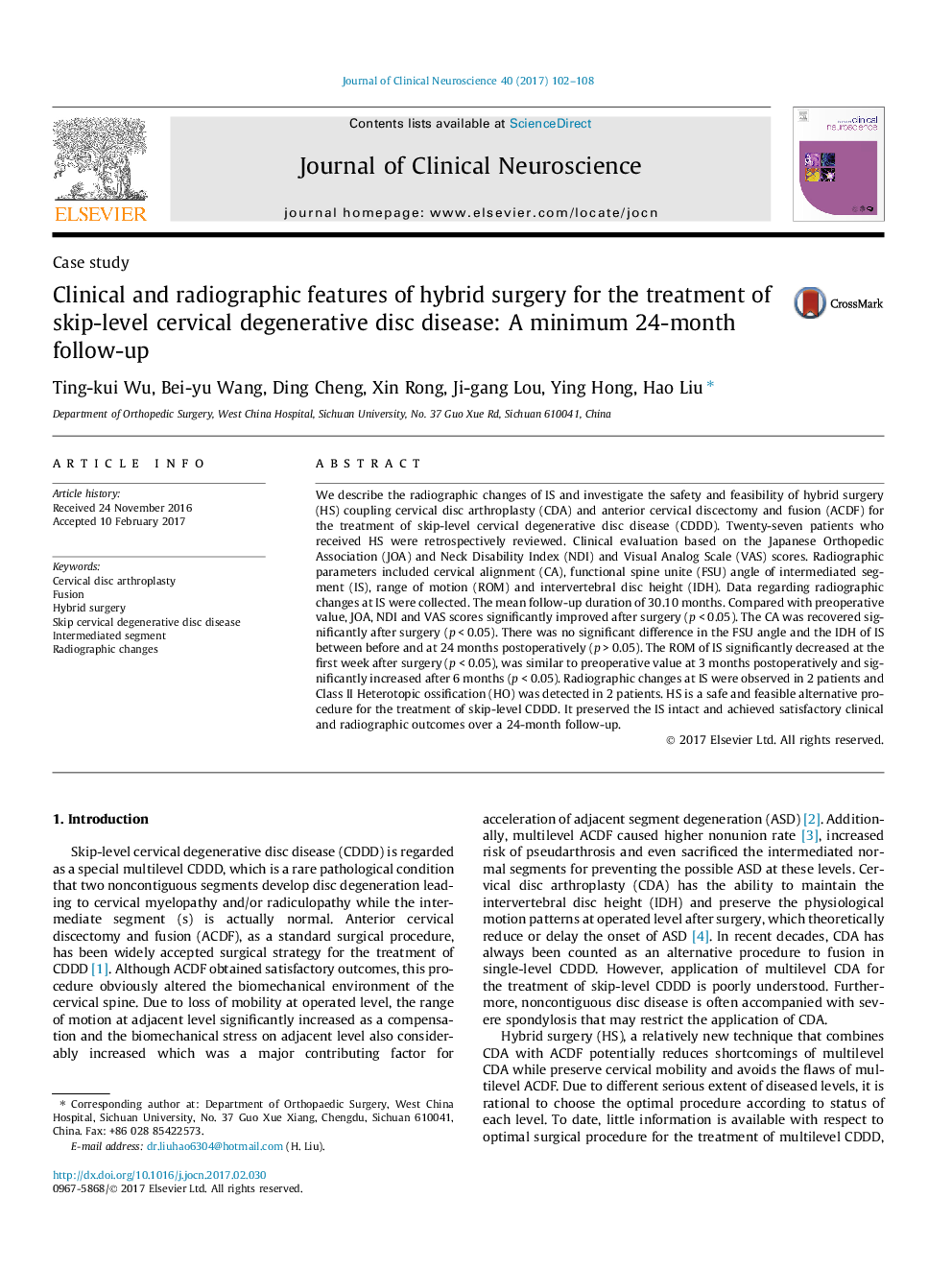| Article ID | Journal | Published Year | Pages | File Type |
|---|---|---|---|---|
| 5629708 | Journal of Clinical Neuroscience | 2017 | 7 Pages |
â¢Significant improvements in clinical outcomes at 24 months postoperatively.â¢Segmental motion and disc height of skip level are preserved with low complications.â¢Radiographic changes at skip level are acceptable.â¢Success base on surgical sequence and postoperative management.â¢Hybrid surgery is an option for skip-level cervical degenerative disc disease.
We describe the radiographic changes of IS and investigate the safety and feasibility of hybrid surgery (HS) coupling cervical disc arthroplasty (CDA) and anterior cervical discectomy and fusion (ACDF) for the treatment of skip-level cervical degenerative disc disease (CDDD). Twenty-seven patients who received HS were retrospectively reviewed. Clinical evaluation based on the Japanese Orthopedic Association (JOA) and Neck Disability Index (NDI) and Visual Analog Scale (VAS) scores. Radiographic parameters included cervical alignment (CA), functional spine unite (FSU) angle of intermediated segment (IS), range of motion (ROM) and intervertebral disc height (IDH). Data regarding radiographic changes at IS were collected. The mean follow-up duration of 30.10 months. Compared with preoperative value, JOA, NDI and VAS scores significantly improved after surgery (p < 0.05). The CA was recovered significantly after surgery (p < 0.05). There was no significant difference in the FSU angle and the IDH of IS between before and at 24 months postoperatively (p > 0.05). The ROM of IS significantly decreased at the first week after surgery (p < 0.05), was similar to preoperative value at 3 months postoperatively and significantly increased after 6 months (p < 0.05). Radiographic changes at IS were observed in 2 patients and Class II Heterotopic ossification (HO) was detected in 2 patients. HS is a safe and feasible alternative procedure for the treatment of skip-level CDDD. It preserved the IS intact and achieved satisfactory clinical and radiographic outcomes over a 24-month follow-up.
